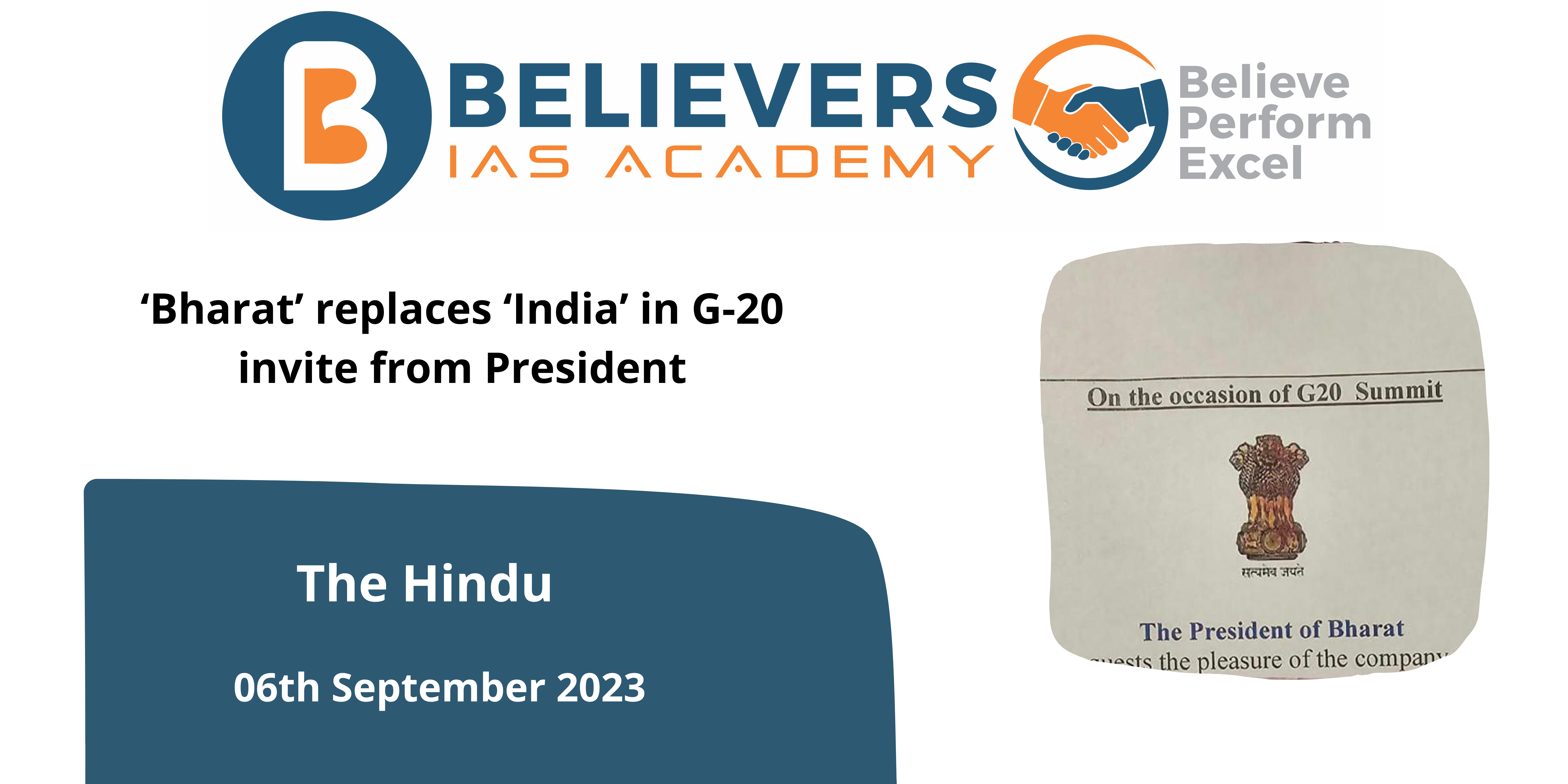‘Bharat’ Replaces ‘India’ in G-20 Invite from President
Context
The name “India” was changed to “Bharat” in invitations made by President Droupadi Murmu to the leaders of states and governments as well as the Chief Ministers of Indian States for an official banquet on the occasion of the G-20 Summit in New Delhi.
The invitation cards read “President of Bharat” rather than the standard “President of India”.
What is the historical background behind the name “INDIA”?
- The Sanskrit word “Sindhu”—which alludes to the Indus River—is where the name India first emerged. The word “Sindhu” was employed by the Greeks to designate “India” for the area surrounding the Indus River. Old English first used the word “India” in the ninth century, and Modern English first used it again in the seventeenth.
- Bharat, Aryavarta, Hindustan, Tenjiku, and Jambudweep are the five names of India.
- The Republic of India is also referred to as “Hindūstān.”
What is the constitutional perspective of the name India?
- Both “India” and “Bharat” are accepted as the official names of the nation by the Indian Constitution. India, or Bharat, is to be a union of states, according to Article 1 of the Constitution.
- Due to disagreement over whether to use “Bharat” or “India,” the Drafting Committee agreed to adopt both titles.
What was the latest update on the country’s Name?
- Invitations to an official banquet in honor of the G-20 Summit in New Delhi were sent by President Droupadi Murmu.
- The word “Bharat” was used in place of “India” on these invites.
- The vocabulary shift sparked controversy in the Indian political system.
What are the legal aspects of changing the name?
- Interchangeability of terms: Legal experts contend that “Bharat” and “India” can be used interchangeably, particularly in light of the official Hindi translation of the Indian Constitution.
- They contend that only if the government insisted on using one phrase alone would an amendment be necessary.
- Constitutional Amendment: Contrarily, some analysts think that any official change to the nation’s name would require a constitutional modification under Article 368.
- English Language: The issue raises concerns concerning the use of the English language in official proceedings because Article 348(1) of the Constitution mandates that Supreme Court and High Court hearings be conducted in English unless and until Parliament enacts a statute to the contrary.
What were the advantages of changing the name of India to Bharath?
- Cultural identity: Advocates of the change frequently believe that “Bharat” is a more culturally meaningful term that better captures India’s extensive history, cultural legacy, and wide range of traditions. They think it can help people feel more connected to their cultural roots and their community.
- Historical Significance: Being the earliest name for the Indian subcontinent, “Bharat” has historical significance in Indian culture and mythology. It is possible to see the name change to “Bharat” as a way to accept and honour this cultural legacy.
- Decolonization: According to some supporters, the name change to “Bharat” entails a decolonization of terminology. They perceive it as a departure from colonial legacies and a declaration of pride and identity for their country.
- Promotion of Indian Languages: Since “Bharat” is the name used in many Indian languages to refer to the nation, its use may stimulate the use of Indian languages. This might support linguistic diversity and the survival of native tongues.
- Unity and Cultural Unity: Supporters think that “Bharat” can serve as a unifying symbol, highlighting the oneness of the various states and cultures that make up India. It might encourage a sense of collective identity.




